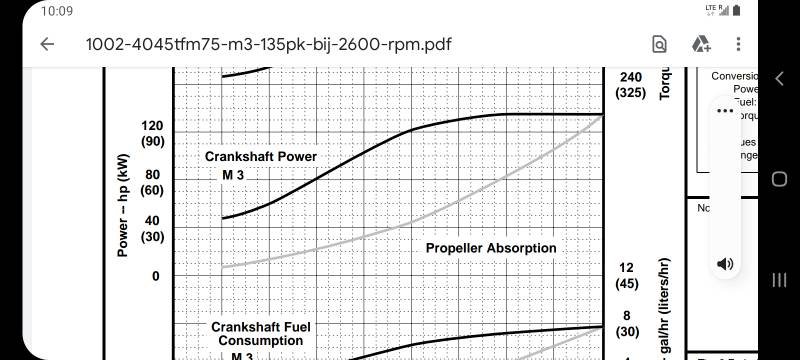I sounds like the methods described give you average GPH, but not so much insight into gph at various rpm increments. I'm just trying to get an idea how accurate the numbers are when handed to someone like the OP. So far, the number passed around have been all over the place, ranging from 2 nmpg to 4 nmpg.
I know a lot of manufacturers publish performance numbers, but wouldn't bank on them being correct. Most I have seen are wildly optimistic, and often times are just calculated estimates and not actual measured numbers.
For what most of us do, it doesn't really matter very much, but when someone is trying to calculate range, and doesn't have fuel stops in between, it suddenly matters quite a bit. We all know that a speed change of just 1/2kt has a significant impact on NMPG. If the numbers throw about are off by 1/2 or a 1/4 kt here, and a 1/2 or 1/4 gph there, is suddenly makes a big difference.
MVWeebles asked how accurate engine-reported fuel burn numbers are. From what I'm told, mostly pretty accurate. How's that for a non-answer? The only person I know who has actually checked was James Hamilton on Dirona. He carefully calibrated the small "burn tank" on his boat. It's about a foot tall and holds about a gallon of fuel, so graduation marks pretty small increments of fuel. He then did runs measuring the burn from the tank compared to what the engine ECU reported. As I recall he found that at higher loads it was spot on, but at light loads is was over-reporting how much was burned, and was off by as much as 10% in the worst case. But like a car speedometer, it's always better to report higher than actual.
What I do believe is that the ECU numbers are probably better than any other method, save for a carefully calibrated burn tank. But even a burn tank you need to be real careful with. A little change of heel, or sighting from a different angle can knock off the results. I suspect this is magnified significantly for something like the sight tubes on a main tank. One here was described as being 20l per inch. That would be really hard to read accurately to anything better than +/-2l or so, I would think. That's +/-10%, or an range of 20% that it could be off.
Our findings would agree with Dirona's. We have engineers who just love to test these things. We find on a normal burn of a tank down that our actual fuel mileage is slightly better than reported by ECU. Now, I do believe the variance for a displacement hull run at slow speed would have the maximum variance and, in this case, much like Dirona found, the actual efficiency is better than the ECU numbers. I attribute this to the return of fuel to the tanks being slightly more than measured.
We've also checked reported loads vs. measured by fuel flow and found very similar.
Now, to those without electronic fuel data, it's our impression, although we can't prove it, that many believe they're getting better fuel mileage than they actually are. Two reasons. First is bragging rights. Second is that they measure on long runs at ideal speeds, but tend to not take into account shorter runs with acceleration or cold engines warming up or runs into strong winds, waves and currents.
As to those numbers reported by manufacturers and by sites like boattest and Power and Motoryacht, we find those numbers very accurate for what they are. We only trust those that are actual runs, not those projected but never trialed. Also, we note the conditions. Here is a typical example:
LOAD 3 persons, 1/3 fuel, 50 lbs. of gear
CLIMATE 79 deg., 95 humid., wind: 5-10 mph, seas: calm
That just happened to be from a Swift Trawler 41. Easy to add 1000-1500 pounds of fuel and gear. 1500 pounds increases the weight by 5-6% and that's significant. Then add 3' seas and a 2 knot current or 15-20 mph winds.
So at 3000 RPM, that boat shows 18 knots and 21 gph or 0.86 nmpg, but I would expect at 3000 RPM in real life, they'll get more like 16 knots and 21 gph or 0.76 nmpg. That is a drop of 11-12%. This is where the problem with tests and builder supplied numbers, not their accuracy, but their misinterpretation or misuse.
Now, I must say, that all our builders numbers have been conservative. In actual usage, we get better fuel mileage than their data they gave us indicated. It's only a small amount but it is better. I attribute most of that to engines just getting properly broken in. After break in, we typically see improvements.
Now, I must give a caveat on builders. Reputable vs. questionable. Reputable builders don't want to give misleading numbers and their graphs are very accurate. However, there are many builders who toss numbers around freely without checking them. Most are smaller builders but then a couple of production builders do the same. They typical trawler builder gives fairly accurate numbers but do not trust the numbers they give prior to ever delivering a boat in a new model. I'm seen some wild sloppiness in those numbers.
One other warning. Don't forget to consider your fuel usage of your generator.


 I am doing 100km and it tells me my average speed today is 45. I swear it must start recording when the engine is started.
I am doing 100km and it tells me my average speed today is 45. I swear it must start recording when the engine is started.